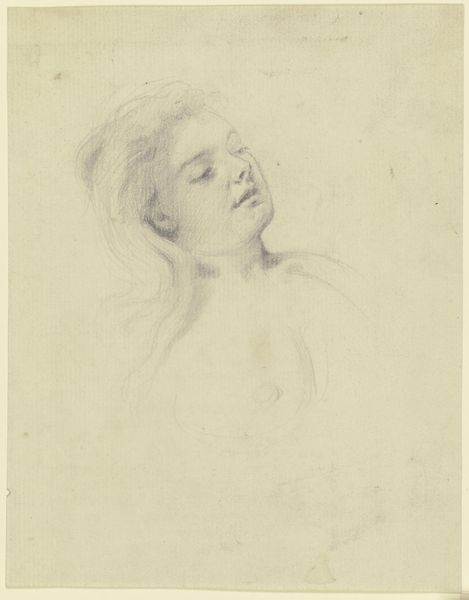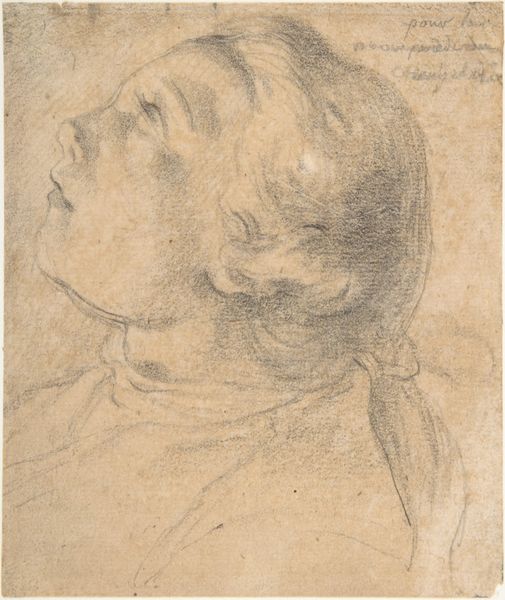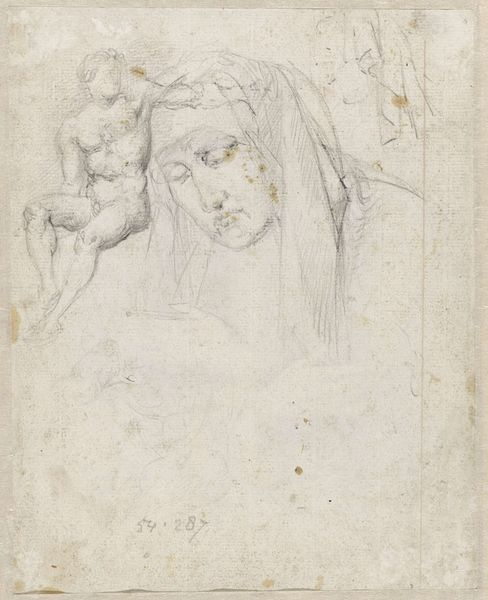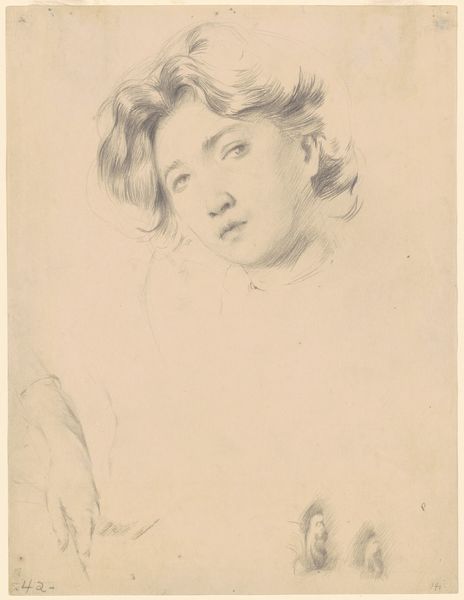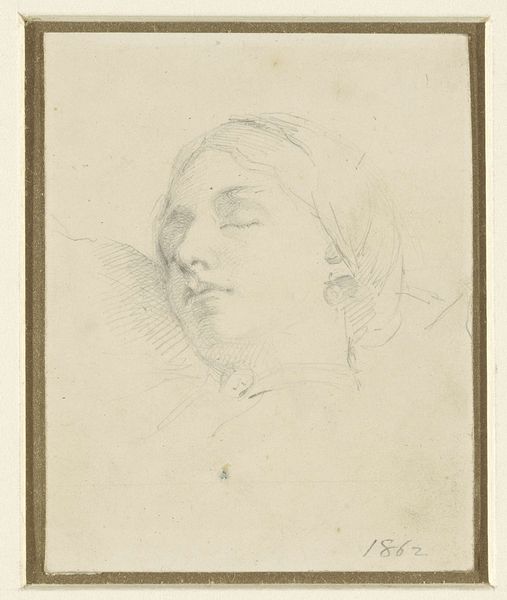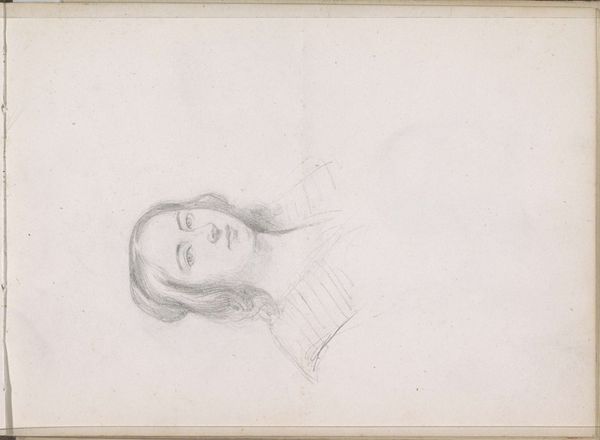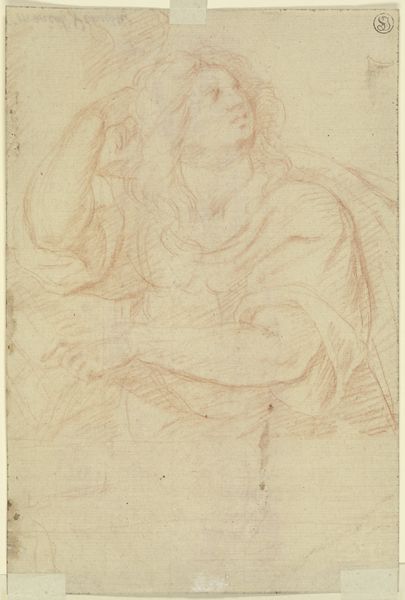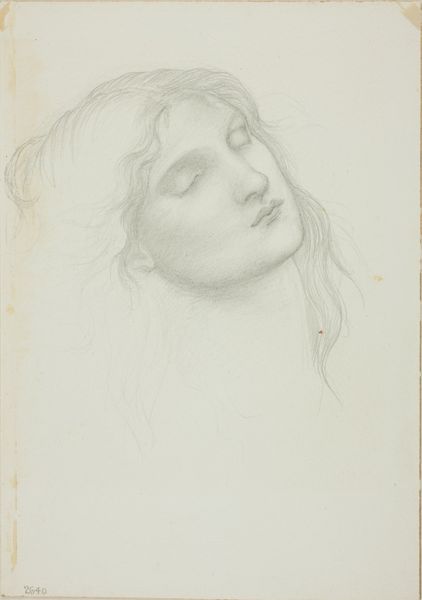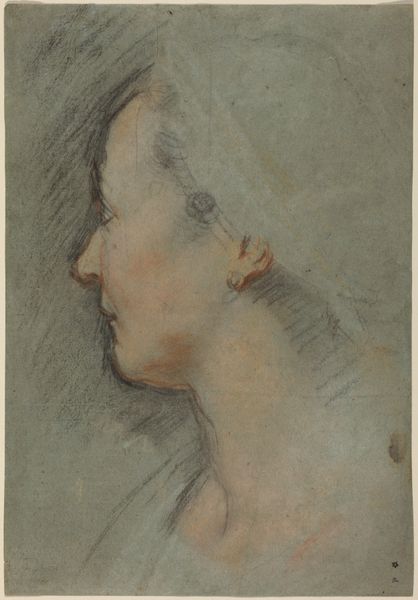
drawing, pencil
#
portrait
#
pencil drawn
#
drawing
#
facial expression drawing
#
light pencil work
#
16_19th-century
#
pencil sketch
#
german-expressionism
#
charcoal drawing
#
portrait reference
#
german
#
pencil drawing
#
pencil
#
animal drawing portrait
#
portrait drawing
#
pencil work
#
realism
Copyright: Public Domain
Editor: Here we have Otto Scholderer’s "Head of a Reclining Young Woman," a pencil drawing from around 1892. It strikes me as incredibly intimate, almost melancholic in its quiet stillness. What do you see in this piece, considering its historical moment? Curator: What I find compelling is the implied narrative of female subjectivity within a rapidly changing socio-political landscape. This was a time when women were increasingly pushing against traditional roles. How might her closed eyes and relaxed posture be interpreted as a form of quiet resistance or perhaps an escape from the societal expectations placed upon her? Do you think the artist sought to portray something beyond mere physical likeness? Editor: That’s a really interesting perspective. I hadn’t considered it as an act of resistance, more as a simple portrait. But thinking about it through that lens, maybe the refusal to meet the viewer's gaze is significant. Is there anything about the artist's own life or other works that speak to that interpretation? Curator: Scholderer existed within a milieu where traditional academic art was being questioned. While he wasn’t at the forefront of radical artistic movements, his choice to focus on an intimate, interior moment invites a consideration of the sitter’s inner life, a space often denied to women in public discourse at the time. Considering the rise of feminist thought around the same time, do you feel that art began mirroring some of these debates around gender? Editor: It's fascinating to consider. It makes me wonder what her life was like, and what Scholderer was trying to communicate beyond just her likeness. I initially saw it as a straightforward sketch, but I can see now how its historical context complicates and enriches its meaning. Curator: Exactly! And hopefully it inspires others to contemplate art not as isolated objects, but as participants within crucial dialogues about identity and power.
Comments
No comments
Be the first to comment and join the conversation on the ultimate creative platform.
